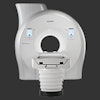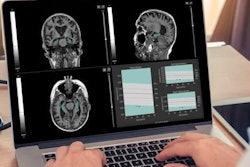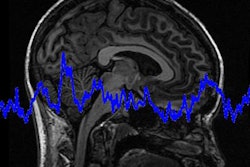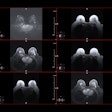
MRI scans have linked higher blood pressure with greater accumulation of white-matter lesions in the brain, demonstrating the benefits of intensive blood pressure control in hypertensive adults, according to research published August 13 in the Journal of the American Medical Association.
In the Systolic Blood Pressure Intervention Trial (SPRINT) Memory and Cognition in Decreased Hypertension (MIND) substudy, researchers used MRI to assess the effect of intensive blood pressure treatment on cerebral white-matter lesions and brain volumes in patients with hypertension. They found that targeting a systolic blood pressure (SBP) goal of less than 120 mmHg was associated with a smaller increase in cerebral white-matter lesion volume over the approximately four-year follow-up period, compared with the standard treatment goal of targeting an SBP of less than 140 mmHg (JAMA, August 13, 2019, Vol. 322:6, pp. 524-534).
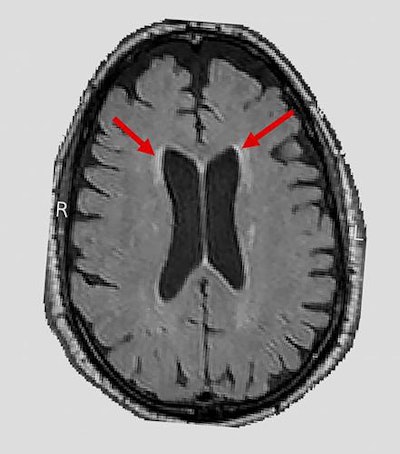 The SPRINT MIND study found a link between blood pressure and accumulation of white-matter lesions (arrows) on brain MRI scans. Image courtesy of the SPRINT MIND investigators and the NIH.
The SPRINT MIND study found a link between blood pressure and accumulation of white-matter lesions (arrows) on brain MRI scans. Image courtesy of the SPRINT MIND investigators and the NIH."These initial results support a growing body of evidence suggesting that controlling blood pressure may not only reduce the risk of stroke and heart disease but also of age-related cognitive loss," said Dr. Walter Koroshetz, director of the U.S. National Institutes of Health (NIH) National Institute of Neurological Disorders and Stroke, in a statement.
The NIH-funded SPRINT MIND trial was a subset of SPRINT, a multicenter randomized clinical trial of hypertensive adults that compared the effect of trying to keep systolic blood pressure at a level less than 120 mmHg versus standard treatment of less than 140 mmHg. SPRINT was stopped early in 2015 after demonstrating conclusively that intensive blood pressure treatment significantly lowered rates of death and cardiovascular disease.
SPRINT MIND researchers from 27 sites analyzed a subset of 449 hypertensive patients who received brain MRI at baseline and again approximately four years later. The group of patients who received intensive blood pressure management had an average increase in white-matter lesion volume of 0.92 cm3, compared with 1.45 cm3 in the standard blood pressure treatment group, the researchers reported.
"Both the brain scans and the cognitive tests reinforce the potential benefits that intensive blood pressure management may have on the brain," said co-author Lenore Launer, PhD, of the NIH's National Institute on Aging in a statement. "We hope that these findings will become the foundation for future studies on how to protect the brain throughout a person's life."
Somewhat surprisingly, the researchers also found a slightly higher loss of brain volume in the intensively treated group than in the standard treatment group. This loss was generally very small and of unclear clinical significance, according to the authors.
"It is also unclear whether the between-group difference in [total brain volume] change reflects loss of brain tissue or another factor, such as hydration status, potentially related to differences in the antihypertensive intervention," they wrote. "There was an unexpected statistical interaction between sex and intensive SBP control for change in [total brain volume], which warrants future investigation."
The SPRINT MIND researchers now plan to assess how controlling blood pressure affects white-matter lesion accumulation in critical brain regions affected by aging brain disorders, the NIH said. They also want to determine what factors may make some people more responsive to treatment.


